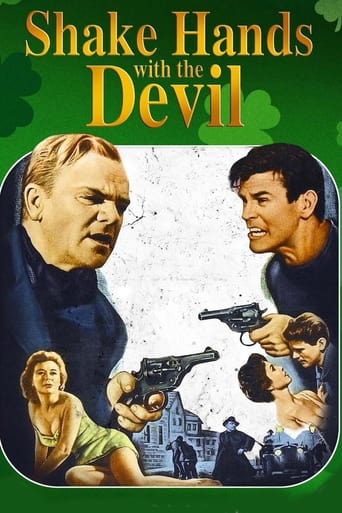

This was a superb drama, magnificently acted with sensational black and white images throughout. This movie was shown on Channel 13 in NYC on Jan. 21, 2012. Somehow, I had never heard of it before. It's as good as any black-and-white movie drama I have ever seen. I put it in the same class of excellence for this category as The Third Man, High Noon, The Bicycle Thief, Zorba the Greek, and The Hustler. I'm so glad I saw it.This movie contains a lot of violent action, but it is shown in the context of a gripping plot involving complex, three-dimensional characters. The only exception is the minor character Col. Smithson. He is a thoroughly "bad guy" character whose brutality incites the Irish resistance fighters to seek vengeance with an elaborate assassination plot that sets the stage for the climax of the movie. It was all wonderfully satisfying. It would make a terrific opera.
... View MoreI first saw this film when I was 11, and even then I much admired it. Have seen it I don't know how many times since, and my original feelings re. this flick have only intensified.First off, many contemporary folks, in and beyond the West, know far too little about the Irish "troubles." This film brings them home, establishing that despite atrocities on either side, neither held the moral high ground with absolute certainty.Cagney is superb. His accent falters occasionally (although he was an Irish-American). But he nails every facet of his character, from the dedicated doctor and professor of medicine to the IRA commander who descends into fanaticism. Most of the rest of the cast is excellent. Murray is a little, well, not quite at that level, but he still gives a respectable performance --
... View MoreJames Cagney was as great a star that existed in Hollywood. I enjoyed this film of the Irish "struggles" as they are referred to, and features a great beauty, Dana Wynter and a favorite actress of mine Glynis Johns. Mr. Cagney was perfect in his performances and again in this film Cagney when on screen dominates every scene. Don Murray is effective but frankly when Cagney is in a scene no matter who shares the scene one always looks at Cagney. That is what happens when a real movie star is in a scene and James Cagney bred at the great Warner Bros of the 1930's was a box office movie star and great actor.James Cagney would make one or two more movies in particular Billy Wilder's zany "One Two Three" and then retire. When Cagney retired he retired. No cameos, no guest shots. Jack Warner asked Cagney to return in Warner Bros film version of My Fair Lady but Cagney -who would have been wonderful-refused. ( In fact J L Warner used to refer to Cagney as "the refuser" because James Cagney refused every enticement to return.Shanke Hands With The Devil is a fine movie, and I recommend it
... View MoreThis is also the first movie role for Richard Harris. He is easily recognizable as one of the IRA gunmen and makes a dramatic suicide stand against the British on the dockside. No idea why he is not mentioned in the database credits, but it is worth mentioning. He plays a lean, mean Irish tough in the pub scene and on the dockside at the shootout. It is because of the Richard Harris character that the hero is captured alive. It is easy to recognize Richard Harris in the movie by his voice and his face, but his youth and apparent physical strength is surprising, given how he has slimmed with age. I hope that this brief comment will alert the interested movie goer to look for Richard Harris in the movie and see all of the elements of his style, which are repeated in countless movies later.
... View More